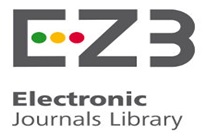ANTHROPOMETRIC INDICATORS OF CHILDREN, TEENS AND ADULTS WITH DOWN SYNDROME IN THE CITIES OF AMETISTA DO SUL-RS AND CHAPECÓ-SC
Keywords:
Down Syndrome. Anthropometry. Physical evaluation.Abstract
The people with Down Syndrome (SD) are characterized by the presence of an extra chromosome 21 in number, causing changes in the body. In addition to engine modifications, physical and intellectual development, it is proven in reading changes in body composition. The present study aims to examine some of the anthropometric indicators of students and patients with Center Activities psychophysical Patrick Down Syndrome (CAPP) Chapecó-SC and Assossiação of Parents and Friends of Exceptional of Ametista do Sul -RS (APAE) by assessing the weight and height, check the waist and hip circumferences and calculation together with the classification results using the formulas of body mass (BMI) and waist / hip ratio (WHR). The study included 27 patients and students with Down syndrome, of both sexes aged between 8 and 23 years; 16 males and 11 females. The female group had a higher mean BMI compared to the male group. In WHR index, it appears that the average male group was equal to the average female group. All data obtained in this study show the importance of physical education professional working with this specific area. Exercise is crucial, because its characteristics are the greatest predictors of obesity and increased visceral fat. At the end of the survey, it is considered that the objective was achieved. Therefore, it is necessary accompaniment of people with Down Syndrome, favoring their quality of life through exercise, healthy eating and wellness to the favored individual.
Downloads
Download data is not yet available.
Downloads
Issue
Section
TRABALHOS PUBLICADOS
License
Autores que publicam nesta revista concordam com os seguintes termos:- Autores mantém os direitos autorais e concedem à revista o direito de primeira publicação, com o trabalho simultaneamente licenciado sob a Licença Creative Commons Attribution que permite o compartilhamento do trabalho com reconhecimento da autoria e publicação inicial nesta revista.
- Autores têm autorização para assumir contratos adicionais separadamente, para distribuição não-exclusiva da versão do trabalho publicada nesta revista (ex.: publicar em repositório institucional ou como capítulo de livro), com reconhecimento de autoria e publicação inicial nesta revista.
- Autores têm permissão e são estimulados a publicar e distribuir seu trabalho online (ex.: em repositórios institucionais ou na sua página pessoal) a qualquer ponto antes ou durante o processo editorial, já que isso pode gerar alterações produtivas, bem como aumentar o impacto e a citação do trabalho publicado (Veja O Efeito do Acesso Livre).
How to Cite
ANTHROPOMETRIC INDICATORS OF CHILDREN, TEENS AND ADULTS WITH DOWN SYNDROME IN THE CITIES OF AMETISTA DO SUL-RS AND CHAPECÓ-SC. (2016). Fiep Bulletin - Online, 85(1). https://ojs.fiepbulletin.net/fiepbulletin/article/view/85.a1.94









